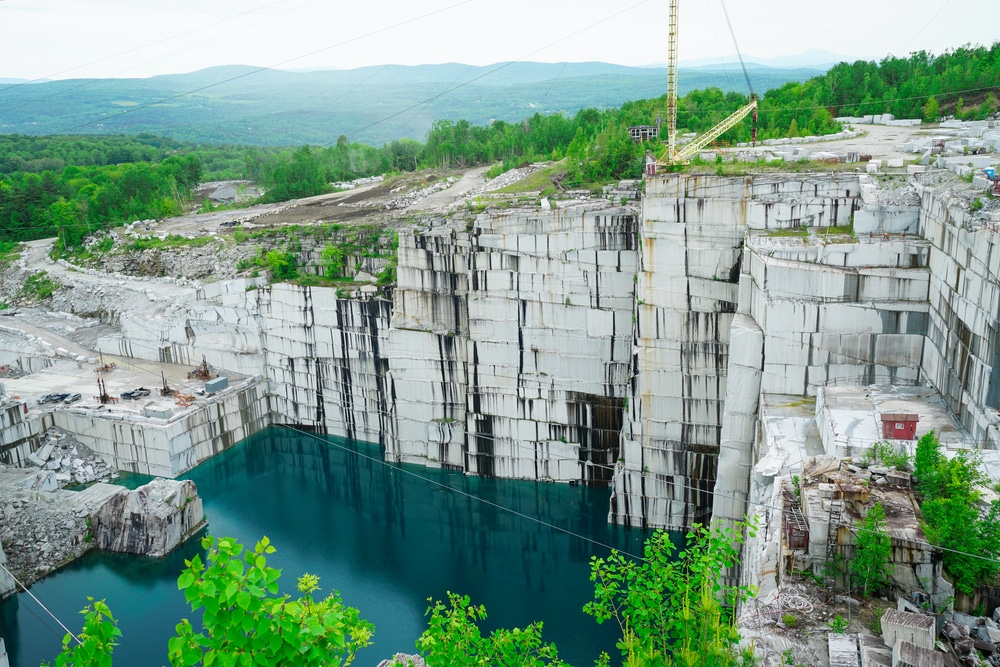Revealing the Mysteries of Granite Quarrying: Where Toughness and Elegance Meet
The world of granite quarrying is a world where the raw strength of nature assembles with human creativity to develop structures that stand the test of time with an air of sophistication. From the midsts of quarries to the thorough polishing in workshops, the process of transforming granite right into building marvels is a complex dance of custom and technology. As we peer right into the midsts of this ancient craft, we begin to uncover the covert ins and outs that form the really essence of our built environment.
The Origins of Granite Quarrying
In the annals of architectural history, the origins of granite quarrying are shrouded in a tapestry of ancient craftsmanship and geological marvels. Dating back to ancient Egypt and Mesopotamia, the removal of granite from quarries noted the start of a trip that would at some point lead to the creation of some of the world's most iconic structures.
Granite quarrying's origins can be mapped to the experienced artisans who recognized the stone's resilience and aesthetic appeal. Via a mix of primitive devices and large resolution, these early quarry employees unearthed granite blocks that would become the foundation of people.
As human beings advanced, so did the methods of quarrying granite. The Romans, renowned for their engineering expertise, developed advanced methods for removing granite to construct monuments, temples, and roads that stood the test of time.
The legacy of these old quarrying techniques remains to form modern style, with granite continuing to be a sign of stamina and sophistication in building projects around the world. (granite quarries in south africa)
Tools of the Quarrying Trade
The advancement of granite quarrying methods from ancient human beings to contemporary times highlights the vital role played by the tools of the quarrying sell shaping the industry's methods. In ancient times, quarrying devices were simple, frequently containing blades, hammers, and wedges made from materials like bronze or iron. These devices required considerable workforce and time to essence granite blocks from quarries.

Additionally, the introduction of pneumatically-driven devices and high-powered equipment has actually dramatically lowered the physical labor called for in quarrying procedures, boosting employee security and efficiency. As the quarrying market remains to innovate, the tools of the useful content profession continue article source to be at the center of driving development and shaping the future of granite extraction.
Extracting Blocks of Granite
Utilizing accuracy equipment and advanced methods, the extraction of granite obstructs from quarries has actually ended up being an advanced process in the modern quarrying market. The initial action entails determining the place and size of the granite deposit to establish one of the most effective extraction approach. When a suitable website is chosen, the extraction procedure starts with the exploration of holes for the positioning of dynamites. Managed blowing up methods are after that employed to disintegrate the granite into convenient areas.

Sprucing Up and Completing Techniques
To attain a perfect surface area on granite blocks, knowledgeable artisans employ a collection of precise sprucing up and completing strategies. look these up After the preliminary extraction and forming processes, the granite obstructs undergo a thorough sprucing up stage to enhance their all-natural charm and durability. One usual method made use of in polishing granite is ruby abrasion, where industrial diamonds are made use of to grind and polish the rock to a smooth finish. This procedure not only produces a glossy surface yet also makes sure harmony in color and appearance across the granite block.
In enhancement to sprucing up, completing methods are applied to further refine the granite's appearance. By carefully picking and using these brightening and completing techniques, artisans can change raw granite blocks into beautiful pieces that display both stamina and sophistication.

Ecological Impact and Sustainability
With the expanding focus on environmental awareness in the industry, granite quarrying methods are significantly scrutinized for their influence on natural resources and lasting sustainability. Quarrying for granite can have significant ecological effects. The extraction process usually involves the usage of hefty machinery, dynamites, and huge amounts of water, resulting in environment destruction, dirt disintegration, and water pollution. Furthermore, the transport of granite from quarries to refining facilities generates carbon discharges, better contributing to environmental deterioration. granite quarries in south africa.
To reduce these effects and make sure sustainability in granite quarrying, sector stakeholders are taking on various steps. Executing sophisticated innovations to minimize energy usage and water usage, reclaiming quarried land for ecological remediation, and promoting responsible sourcing practices are some strategies being employed. Qualifications such as the Woodland Stewardship Council (FSC) and the Leadership in Energy and Environmental Layout (LEED) aid consumers identify environmentally pleasant granite items.
Verdict
Finally, granite quarrying is a procedure that requires specialized devices and methods to remove blocks of granite and brighten them to a high level of surface. While the environmental effect of quarrying can be significant, initiatives are being made to improve sustainability techniques in the industry. On the whole, granite quarrying is a delicate equilibrium between using the toughness and beauty of this all-natural stone while decreasing its effect on the setting.
Comments on “A Trip With Granite Quarries in South Africa: Unveiling Nature's Artistry”